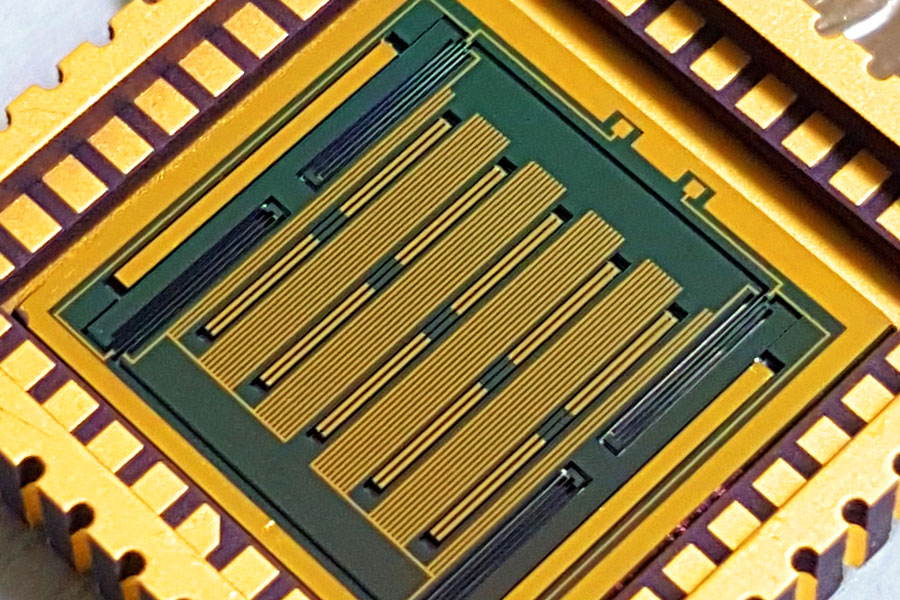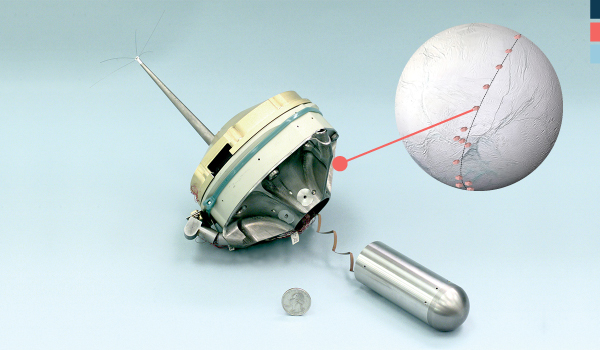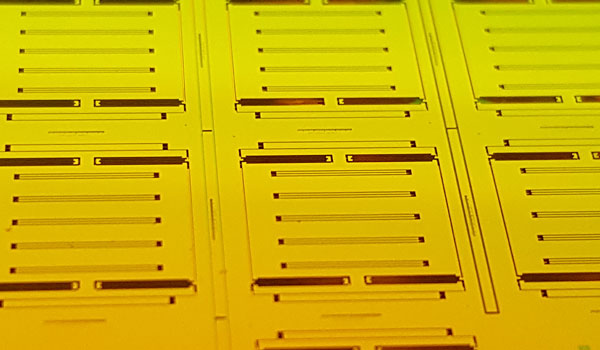Above:
Universal MEMS Seismometer mounted in vacuum package.
MEMS Seismometer
Probing the Interiors of Planets
Karl Yee - Menooa Badalian - Brent Blaes - Sharon Kedar - Risaku Toda
The branch of science that can most efficiently reveal the detailed structures of planetary interiors is seismology. Previous NASA missions that have carried seismometers as payloads include the Apollo moon missions and the Viking Mars landers. The InSight mission, launched in 2018, utilizes seismometers to study the interior of Mars. In the coming years and decades, NASA will launch a series of missions to explore the Moon and the ocean worlds of the solar system, including Titan, Enceladus, Europa and Ganymede. Seismometers applied on such bodies would reveal the makeup of the interior, mantle and core structures, as well as characterization of fluid-flow induced seismic activity, cryo-volcanic activity, and the frequency of meteoric impacts.
Traditional seismometers (such as those utilized on previous NASA missions) rely upon a large proof mass and soft suspension system for sensitivity. These types of seismometers tend to be large, fragile, and complex, requiring a dedicated soft lander, deployment mechanism, leveling and environmental shielding. NASA’s future exploration of our solar system’s ocean worlds will require a more sensitive, micro-seismometer capable of providing the same science as previous seismometers but without the requirement of leveling and environmental controls.
Measuring only 11.3 x 11.3 and 1.2 mm, the Universal MEMS Seismometer (UMS), is currently under development at the MDL. The UMS is a high-shock tolerant micro-seismometer with advanced performance (i.e. low noise, broadband and high dynamic range) made possible by the novel utilization of electrostatic spring softening. The UMS is designed to operate in extreme environments (i.e. extreme temperatures, high radiation, large magnetic fields) found in the solar system’s ocean worlds and rocky planets. The UMS can be easily incorporated into any lander architecture with negligible impact to spacecraft system weight and power. In addition, the UMS does not rely on deployment and leveling mechanisms unlike most sensitive seismometers. Its high shock tolerance will enable deployment from rough landers and penetrators making it possible for the first time, to deploy a network of seismometers on an extraterrestrial body.
Concept for deployment of a network of seismic sensors using penetrator spacecraft.
+ Larger image




